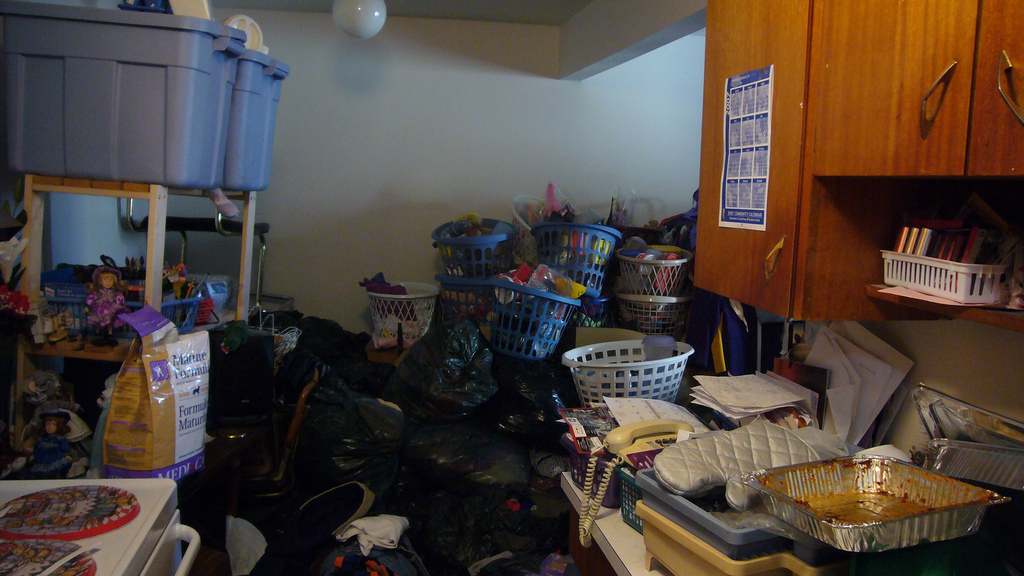When seniors hang on to a lot more stuff than necessary, they could be hoarding. Hoarding behavior should be addressed as it can be dangerous to a senior’s well-being.
What is hoarding?
Hoarding is the compulsive purchasing, acquiring, searching, and saving of items that have little or no value. The behavior can cause a decline in emotional, physical, social, financial, and mental health, especially for seniors.
Over 10 million people in the United States are diagnosed with hoarding at different stages. Hoarding can escalate as we grow older. The largest population of individuals who hoard are single or divorced females ages 50 to 85.
It is important to remember that hoarding is a psychological condition that cannot be resolved just by cleaning up a space. In fact, doing so without addressing hoarding behavior could cause more stress. When dealing with a hoarding situation, it is a good idea to work slowly and involve a professional counselor.
There are many reasons people begin to hoard items. Often, hoarding happens over time. Seniors who hoard might resist getting rid of items because they feel their items are:
- Needed for future use
- Great deals they couldn’t pass up
- Unique or have sentimental value
Hidden dangers of hoarding to seniors
Hoarding can result in some serious problems for seniors, including:
Decreased mental health
According to research, 75% of people who hoard things have another mental health condition, like social isolation, anxiety, or depression. People who hoard tend to not allow visitors or family members to enter their home, which results in isolation. Anger, resentment, and depression can be present among the individual affected by hoarding and their family members.
Obsessive shopping and having an intense sentimental attachment towards objects are also symptoms of hoarding. An individual may feel the need to continue collecting items that most people would consider having no value, such as junk mail or old clothing. People who hoard, however, often feel connected to these kinds of items and find throwing them away very difficult.
Unsanitary conditions and health issues
Piles of clutter can block airflow and vents, causing low levels of oxygen. This can also make it difficult to cool a home on hot days and raise carbon dioxide levels.
Hoarding can lead to situations that foster illness-causing bacteria and viruses. Spoiled food can lead to pests and food-borne illnesses. Some bugs carry dangerous diseases and viruses, which are transferred through bites. Other bugs or rodents may carry and spread bacteria throughout the home.
Mold can grow in hard to see/reach areas of the home. Mold spores can be dangerous to those who are allergic. Even if an individual is not allergic, mold can cause breathing problems.
Fire hazards
Hoarding can put a person’s home at higher risk for fires, or make a fire accelerate faster. If the home is not maintained regularly, fire hazards can go undetected, making a fire more likely to occur. Piles of newspapers, magazines, or other materials can easily burn, spreading fire throughout a home quickly.
Greater risk of falling
Hoarding can make fall prevention difficult. A person may have a difficult time moving around due to the extreme amount of clutter. There is a greater chance a senior will trip over something in a walkway, or attempt to climb over clutter and fall.
If a pile of clutter falls on top of a senior, they could become trapped. This situation can cause physical injuries. It may take a long time to discover the trapped individual. Because 1 in 4 older adults are hospitalized due to a fall injury every year, it is important to ensure your loved ones’ homes are low risk for falls.
Prevention from emergency care
Hoarding can make an emergency responder’s job difficult. Emergency workers have been known to suffer injuries while trying to help individuals who have hoarded too many items in their homes.
Hoarding can also make it hard for an emergency worker to get to an individual in need of immediate care. The delayed response could shave away critical time that impacts an injured person’s recovery.
*The information in this article is intended solely to provide general information on matters of interest for the personal use of the reader, who accepts full responsibility for its use. This article should not be used as a substitute for consultation with professional legal, medical, or other competent advisors.

